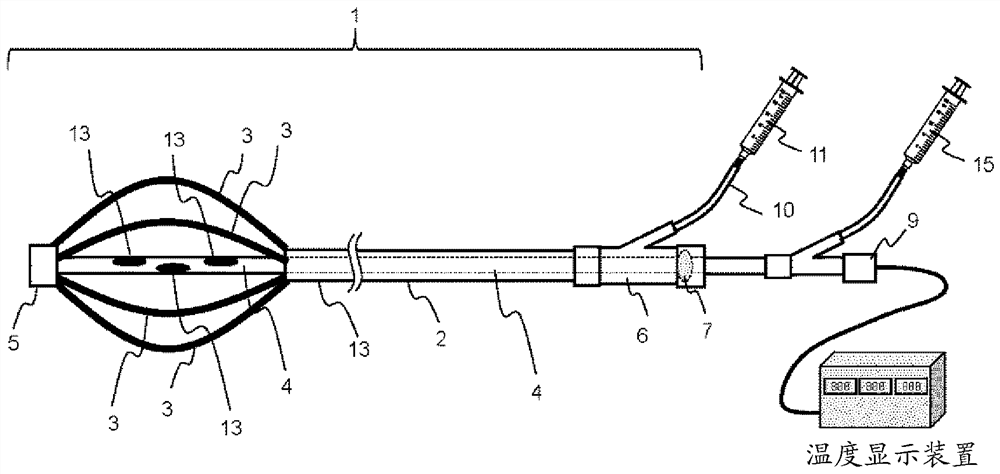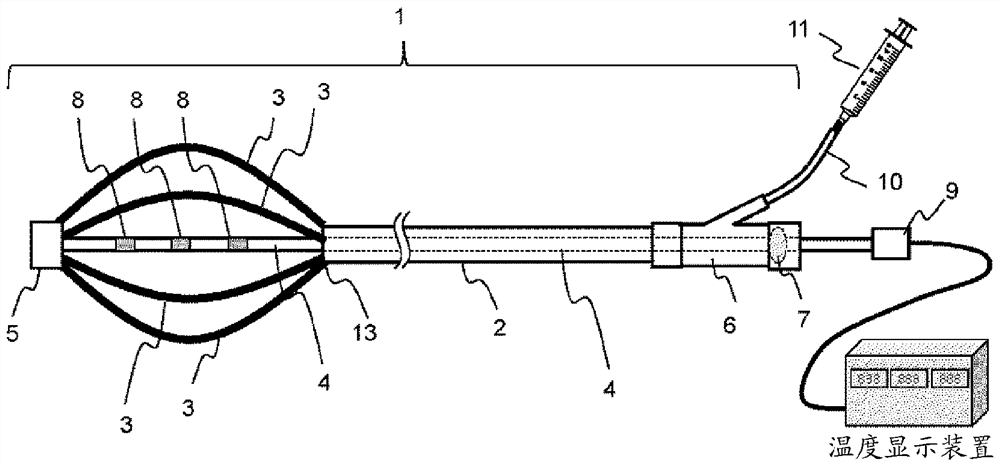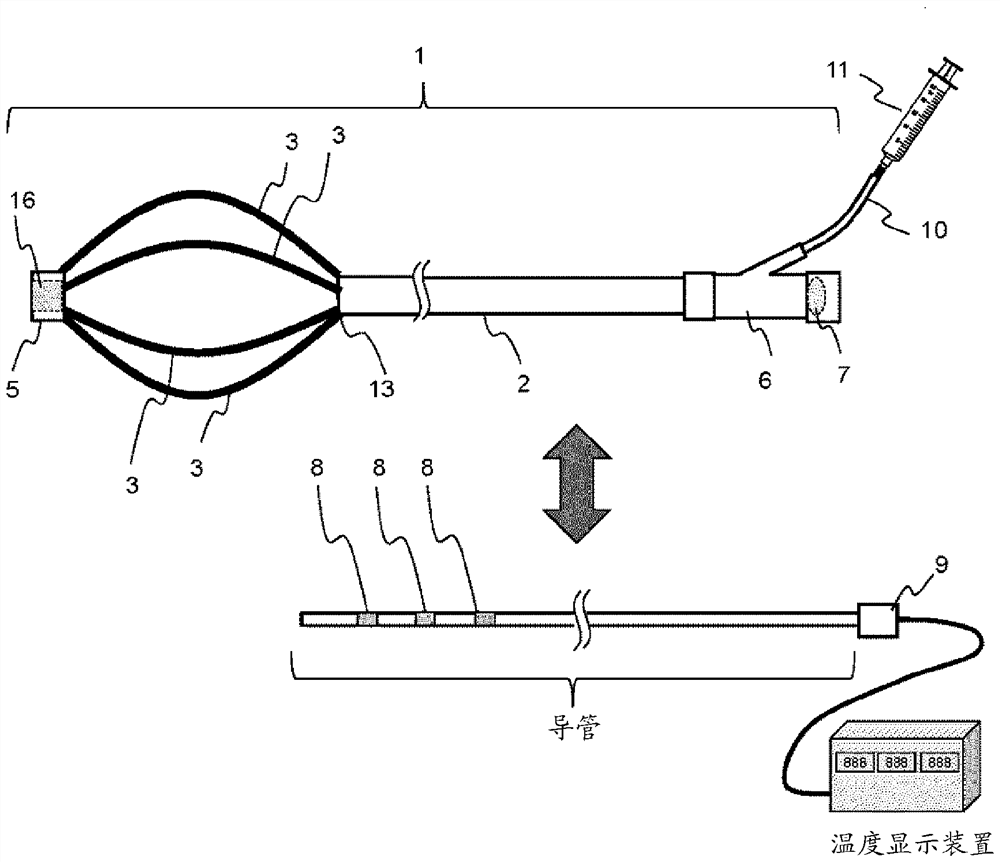Esophageal liquid-supply catheter, and intermediate component of esophageal liquid-supply catheter
A catheter and liquid delivery technology, applied in catheters, parts of surgical instruments, contraceptives, etc., can solve the problems of unable to completely prevent temperature transmission, unable to efficiently reduce temperature transmission, unable to efficiently deliver liquid, etc.
- Summary
- Abstract
- Description
- Claims
- Application Information
AI Technical Summary
Problems solved by technology
Method used
Image
Examples
Embodiment 1
[0062] A hose made of polyvinyl chloride having an outer diameter of 4.7 mm, an inner diameter of 3.8 mm, and a length of 550 mm was formed and provided as a cylindrical member 2 .
[0063] A hose made of polyurethane with an outer diameter of 2.3 mm, an inner diameter of 1.2 mm, and a length of 580 mm was formed and installed as a shaft 4 . Only a copper wire with a diameter of 0.1 mm and a length of 650 mm coated with an electrically insulating protective coating made of polytetrafluoroethylene and a wire with a diameter of 0.1 mm and a length of 650 mm coated with an electrically insulating protective coating made of polytetrafluoroethylene are used. The ends of the two metal wires of the copper wire are welded together to form a thermoelectric pair, and the soldered thermoelectric pair is fixed inside a SUS304 tube with an outer diameter of 2.5 mm, an inner diameter of 2.3 mm, and a length of 4.4 mm, thereby forming a temperature sensor 8 . Three temperature sensors 8 are...
Embodiment 2
[0068] The liquid feeding catheter for esophagus of Example 2 (hereinafter, "Example 2") was produced in the same manner as in Example 1 except that the width of the vinyl chloride flat plate used as the arm 3 was changed to 0.9 mm. The maximum width of the section of the arm 3 is 1.0 mm.
Embodiment 3
[0072] An esophagus liquid feeding catheter of Example 3 (hereinafter referred to as "Example 3") was fabricated in the same manner as in Example 1 except that the width of the vinyl chloride flat plate used as the arm 3 was changed to 0.5 mm. The maximum width of the section of the arm 3 is 0.7 mm.
[0073] Hereinafter, the method and result of comparative evaluation using Example 1, Example 2, Comparative Example 1, and Example 3 are shown.
[0074] (Temperature transfer reduction effect)
[0075] Figure 8 It is a schematic diagram of the evaluation system for confirming the effect of reducing the temperature transmission by the esophageal liquid feeding catheter. In this evaluation, an ablation catheter with a balloon capable of heating the balloon in the atrium was assumed, and a polyurethane balloon with a thickness of 30 μm and a diameter of 30 mm was installed as the heat source 18 by circulating warm water at 70° C. at a rate of 1 L / min. By circulation of this warm...
PUM
 Login to View More
Login to View More Abstract
Description
Claims
Application Information
 Login to View More
Login to View More - R&D
- Intellectual Property
- Life Sciences
- Materials
- Tech Scout
- Unparalleled Data Quality
- Higher Quality Content
- 60% Fewer Hallucinations
Browse by: Latest US Patents, China's latest patents, Technical Efficacy Thesaurus, Application Domain, Technology Topic, Popular Technical Reports.
© 2025 PatSnap. All rights reserved.Legal|Privacy policy|Modern Slavery Act Transparency Statement|Sitemap|About US| Contact US: help@patsnap.com



